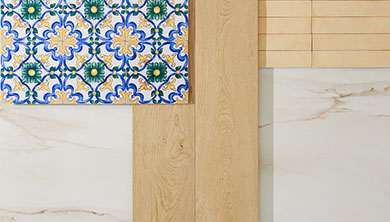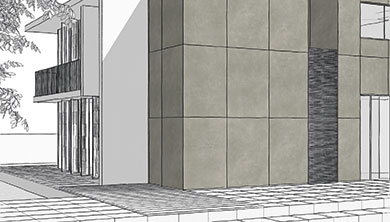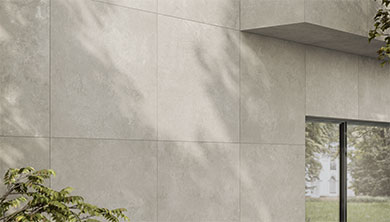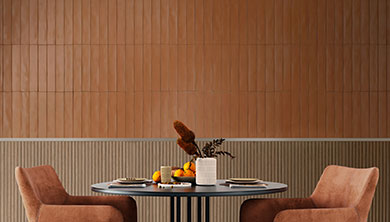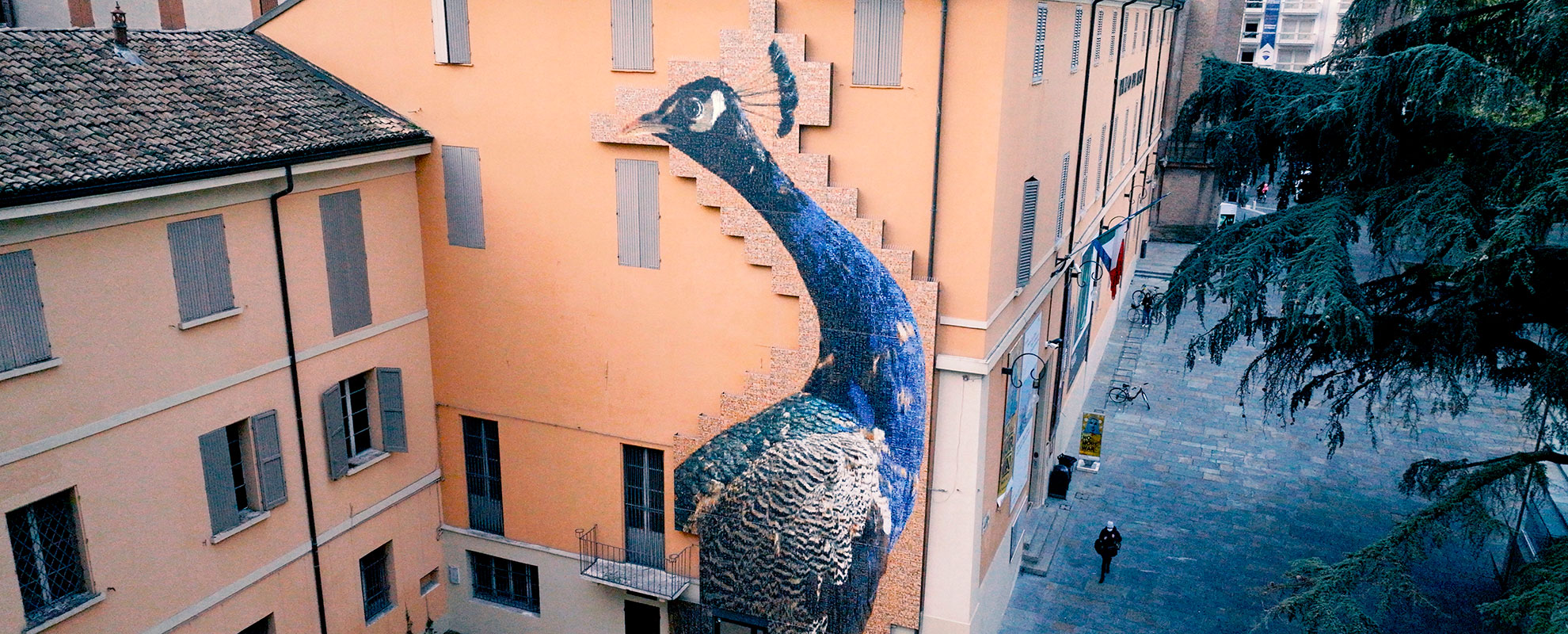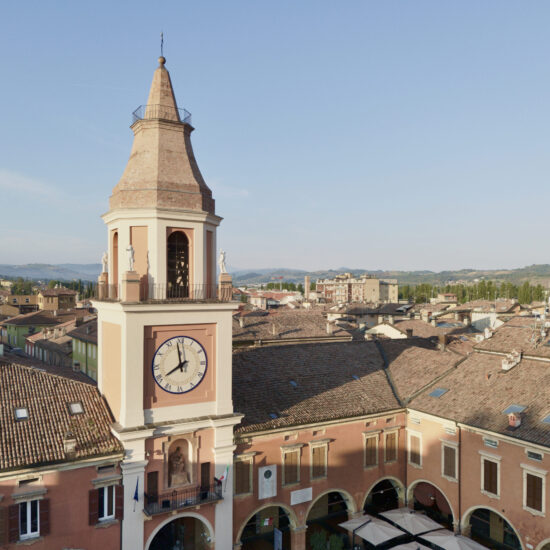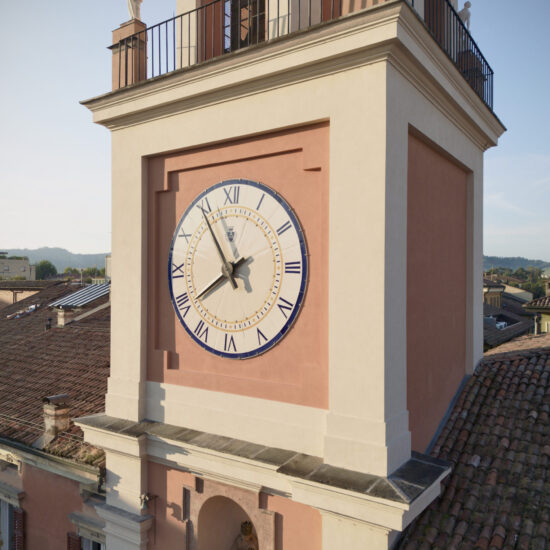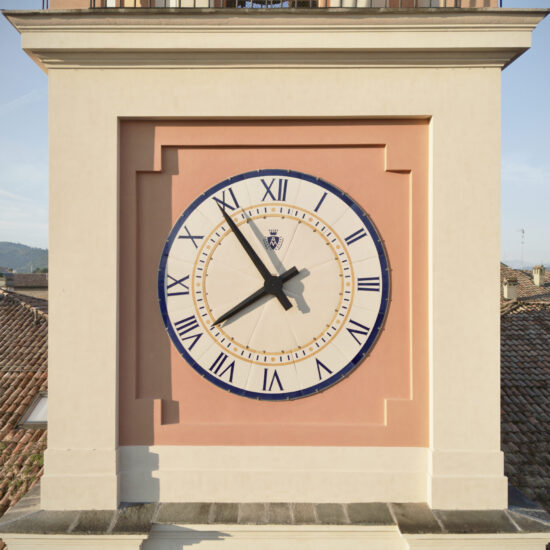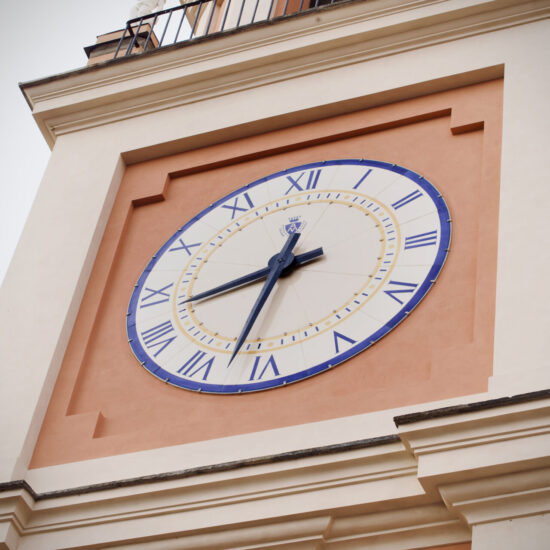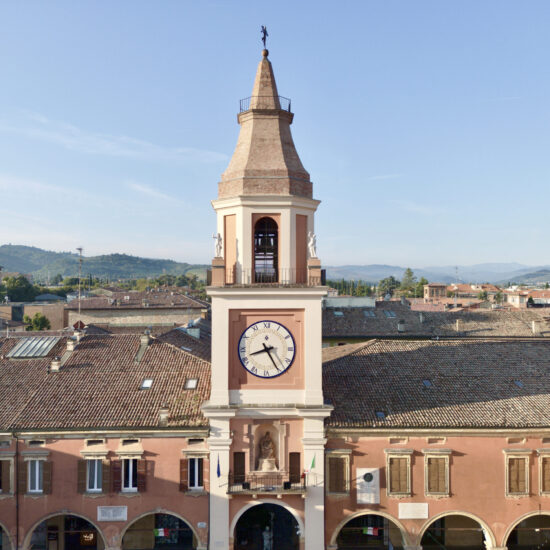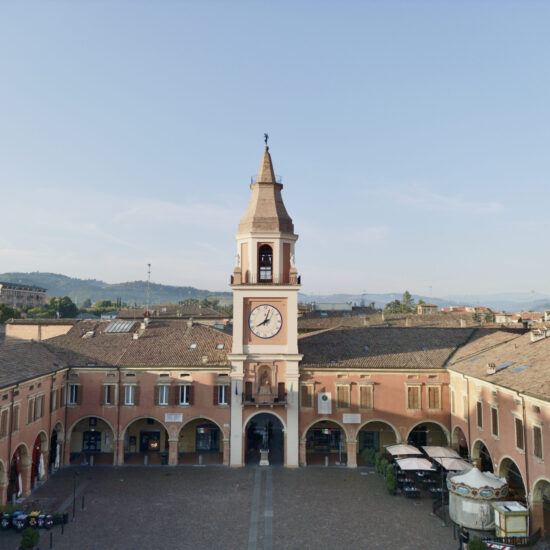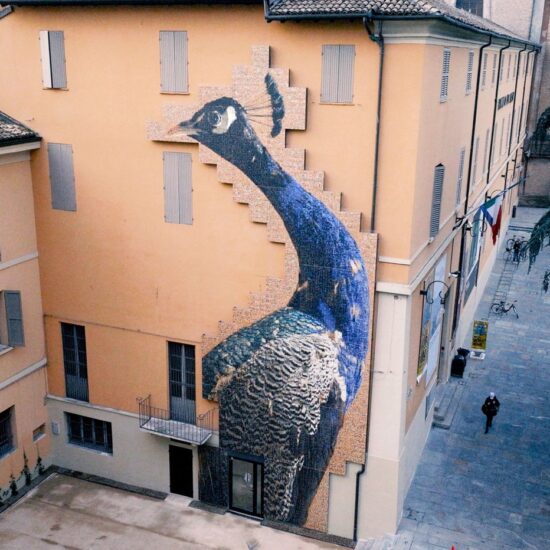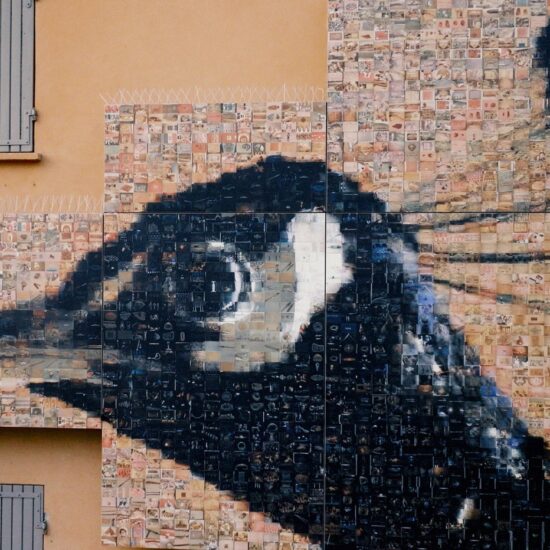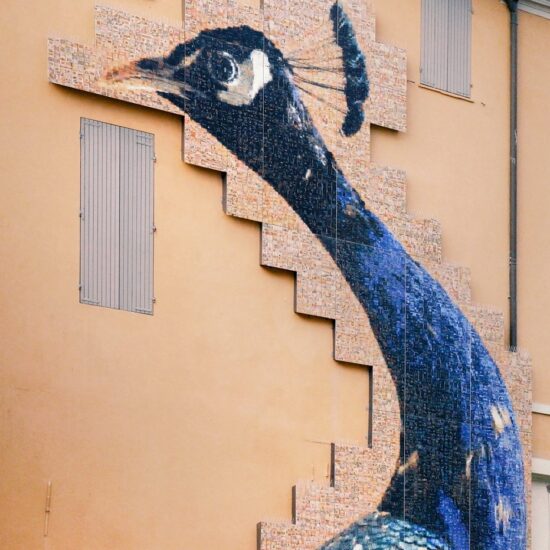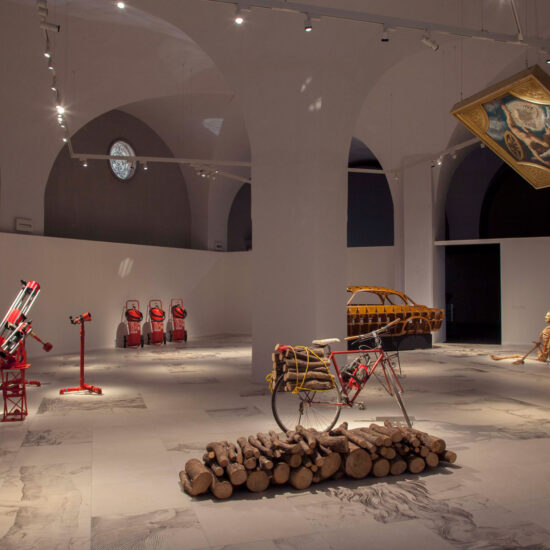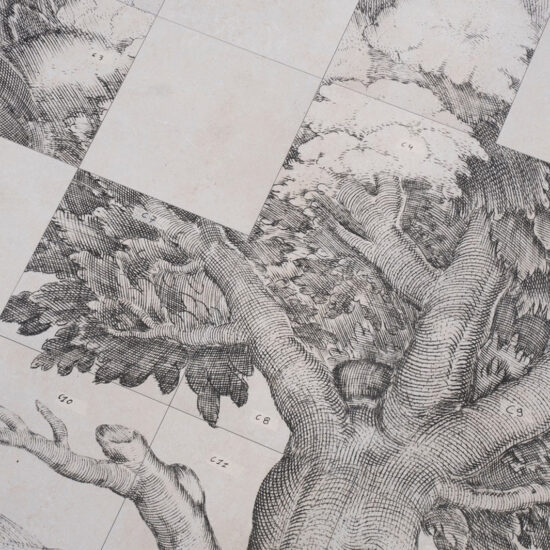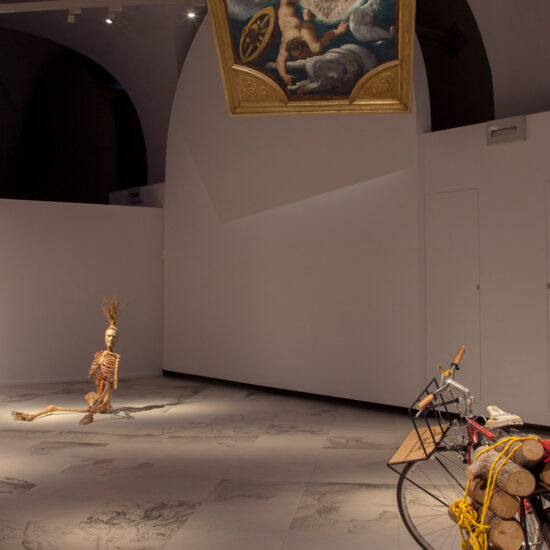The involvement and inclusion of the local community in our growth plans is one of the pillars of our social sustainability policy. For this reason, our sites are open places, in constant dialogue with customers, local organisations and associations which share our interest in the common good, a passion for art, ceramics, beauty and the local area.
Crogiolo, our space open to the community
In 2015, on the occasion of the company’s 80th anniversary, we overhauled our oldest production site known as the Crogiolo, turning it into a multi-functional space. It owes its name to Filippo Marazzi Jr who turned the company’s first industrial building in Sassuolo into a cutting-edge research centre where artists, architects and potters could experiment freely with creative use of materials.
Since 2017, the Crogiolo has hosted the Municipality of Sassuolo’s cultural season. All events are free of charge and dedicated to the entire community.
On the occasion of the International Day for the Elimination of Violence against Women, two significant events were organized. The first, titled “Chi rimane” (Who Remains), is a conference with an artistic performance organized by the association Non è Colpa Mia, in collaboration with the Lions Club of Sassuolo and the Tina Anti-Violence Center of the Ceramic District Union of Municipalities, with a particular focus on the orphans of femicide. The second event was a Silent March, aimed at high school students in the ceramic district and organized by the Municipality of Sassuolo, with the goal of raising awareness among young people about the issue of gender-based violence.
Restoration of the Clock Tower
The restoration of the Clock Tower, carried out by the Municipality of Sassuolo with the contribution of Marazzi Group, has revitalized an architectural element that has become a symbol of the city over time. “Il Campanone,” built between 1676 and 1680 according to a design by the ducal architect Antonio Loraghi, strongly characterizes Piazza Garibaldi, the nerve center of the city that hosts markets, conferences, shows, and events open to citizens throughout the year. The Tower has undergone several interventions by different architects since its inception until the latest restoration works on the square in the 1980s, during which Marazzi donated the ceramic clock face. Marazzi has a deep emotional connection with Piazza Garibaldi, where the historic grocery store owned by the company’s founder is still present.
The renovation of the new wing of the Ducal Palace of Sassuolo
Promoted by the Gallerie Estensi of Modena and the Ministry of Culture, the new setup of the “Apartment of Orlando” in the Ducal Palace of Sassuolo, one of the most important Baroque residences in Northern Italy and part of the autonomous museum Gallerie Estensi, involved five rooms in the southern wing of the Palace, which had previously been only occasionally open to the public. The setup showcases the transformation of the Ducal Palace from a feudal castle to a park and summer and autumn residence of the Estense court. The narrative is presented with reconstructive models, films, and projections that illustrate the splendor of the palace and the rituals of the court, an ancient world that has left significant traces on the territory and the economy of Sassuolo.
Exhibition "Gianni Berengo Gardin. Marazzi, the Fast Lines
On the occasion of the 50th anniversary of the revolutionary patent for rapid single-firing, Marazzi presented the exhibition Gianni Berengo Gardin. Marazzi, the Fast Lines, curated by Alessandra Mauro in the spaces of Palazzo Ducale Sassuolo, Gallerie Estensi. A series of shots, presented to the public for the first time, capture the colorful and abstract rhythm of ceramic production. The exhibition celebrates the 50th anniversary of Marazzi’s rapid single-firing patent, which, in 1974, forever changed the tile production process, revolutionizing the entire ceramic sector. The selection of 42 unpublished shots on display, taken by Gianni Berengo Gardin in 1977, captures the dynamism of the new production lines, standing out for a surprising use of color. In a unique work of its kind, the artist abandons his classic black-and-white photography to explore the speed and vibrant flow of shapes and tones, offering an abstract and unusual vision of the production process.
Exhibition "The Small Tiles. 1889-1939. The First Fifty Years of the District"
The exhibition “The Small Tiles. 1889-1939. The First Fifty Years of the District” at the Museum of Ceramics of the Municipality of Fiorano, at the Spezzano Castle, tells the story of the first decades of the Modena-Reggio ceramic industry, from 1889 until the Second World War. Organized in collaboration with various institutions and companies in the sector and with the contribution of Marazzi Group for scientific research, the exhibition displays about one hundred rare and representative pieces from historic companies such as Fabbrica Rubbiani, Ceramica Carani & Giglioli, Marca Corona, Saime, Saces, and others. The pioneers of the sector, such as Filippo Marazzi, Guido Siliprandi, and Antonino Dal Borgo, are also celebrated. The exhibition covers a fundamental period in the history of the ceramic district, culminating in the “boom” of tile manufacturing companies in the post-war period. Additionally, for the first time, the Medici Collection is showcased, a heritage of over 7,000 pieces documenting the evolution of local ceramic production, donated to the Municipality of Fiorano by the family of Antonio Medici, a collector who passed away in 2021.
Marazzi Group partner del Nuovo Cinema Corso di Finale Emilia
Marazzi Group supported the programming of the 2024/2025 theater season at Nuovo Cinema Corso in Finale Emilia, an important cultural reference point for the local community. Inaugurated in 2021 after a complete renovation, Nuovo Cinema Corso reopened its doors 17 years after its closure, becoming an example of urban redevelopment in the heart of Finale Emilia. Today, the cinema is much more than a place of entertainment: it is a space dedicated to culture and socialization, hosting not only film screenings but also conferences, exhibitions, and public meetings aimed at enhancing the territory.
Curiosa Meravigliosa by Joan Fontcuberta
Joan Fontcuberta’s Curiosa Meravigliosa for the Palazzo dei Musei in Reggio Emilia is the first permanent work of art made from ceramic slabs, installed on a ventilated wall in an open space and accessible to all. It is a monumental public artwork, sixteen metres tall and six metres wide, consisting of 12,000 photographs sent in by the city’s population, transformed by the artist, in partnership with Marazzi, into large photo-printed ceramic slabs.
“I like to consider a work of this kind as a ‘document-monument’,” Joan Fontcuberta says. “’Document’ because it is a sort of X-ray of a society and a culture; ‘monument’ because it bears witness to the passage of time. Within a few generations, ‘Curiosa Meravigliosa’ will be viewed as a collective memory capsule.”
The work won, in 2023, the 10th Edition of the CULTURE + ENTERPRISE Award in the PRO BONO VAAS APPLICATION category, selected from 132 applications received.
The prestigious Award, initiated by Federculture and The Round Table in collaboration with Fondazione Italiana Accenture and ALES, each year selects, rewards and shares the best projects carried out in Italy by companies, communication agencies, nonprofit organizations, public administrations, associations and cultural foundations that have successfully implemented a public-private collaboration.
The exhibition Metamorfuoco by Simon Starling
For the exhibition Metamorfuoco. Sotto la luce di Tintoretto, which came to a conclusion on 31 January 2023 at Modena’s Gallerie Estensi, we partnered with British artist Simon Starling to create an involving artwork.
The installation places the cycle of paintings by Tintoretto alongside woodcuts and contemporary works, taken from the Gallerie Estensi’s archives, to stimulate reflection about the effects of climate change. The special porcelain stoneware floor made by Marazzi to the artist’s design is an integral part of the work.
The artist used the ceramic surfaces as a blank canvas on which he drew natural elements that enter into dialogue with the figures in the Tintoretto cycle. The exquisite artistic mosaic is made up of about 60 decorations, each of them different. The result is a circular space designed by Starling to immerse visitors in an environment to walk through and admire Tintoretto’s masterpiece suspended above their heads.
Supporting the Community and the Needy
In collaboration with institutions, we participate in the implementation of projects aimed at citizens, such as bike paths, public parks, and interventions that benefit the entire community, with a particular focus on young people and those who are ill or differently abled. In 2024, we participated together with the Giacomo Sintini Association in the “Adopt a Gift” project dedicated to children undergoing treatment in the onco-hematology department of the Perugia hospital. We continue to support the Italian Lymphoma Foundation (FIL), a non-profit organization that conducts scientific research for the treatment of lymphomas and lymphoproliferative diseases. Additionally, since 2019, we have supported the Progetti del Cuore Association, which facilitates services provided by municipalities and volunteer associations to the most vulnerable segments of the population: particularly children, differently abled citizens, and the elderly. In 2024, in collaboration with the “Io sto con…” non-profit organization, we contributed to the purchase of vehicles intended for the transport of the elderly, disabled, and people with mobility difficulties due to physical, psychological, social, or family reasons. These vehicles were donated to the Public Service Company for People of the Northern Modena Municipalities Area.

